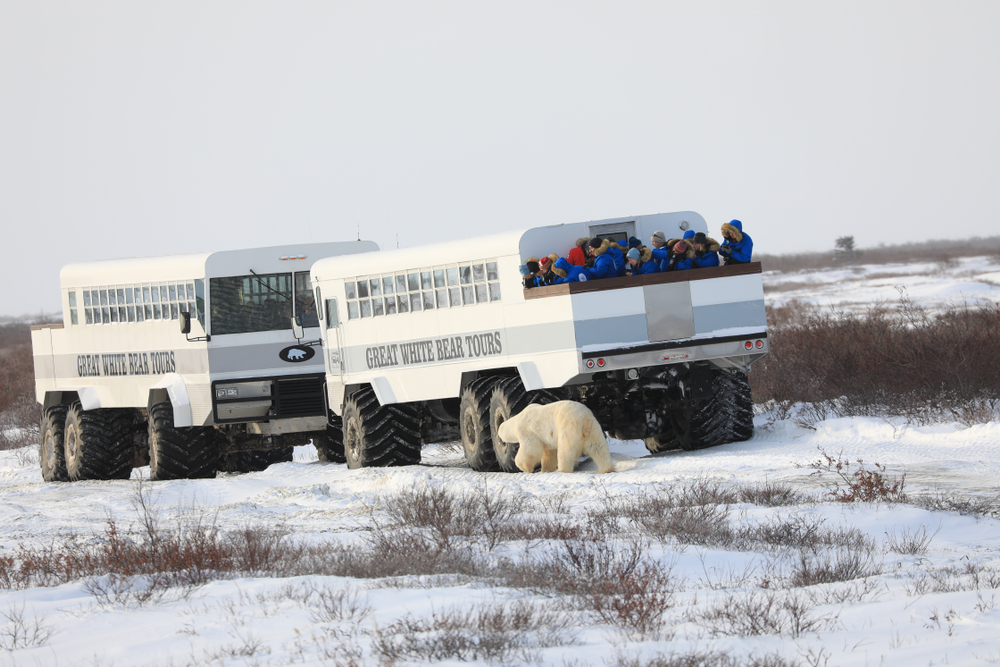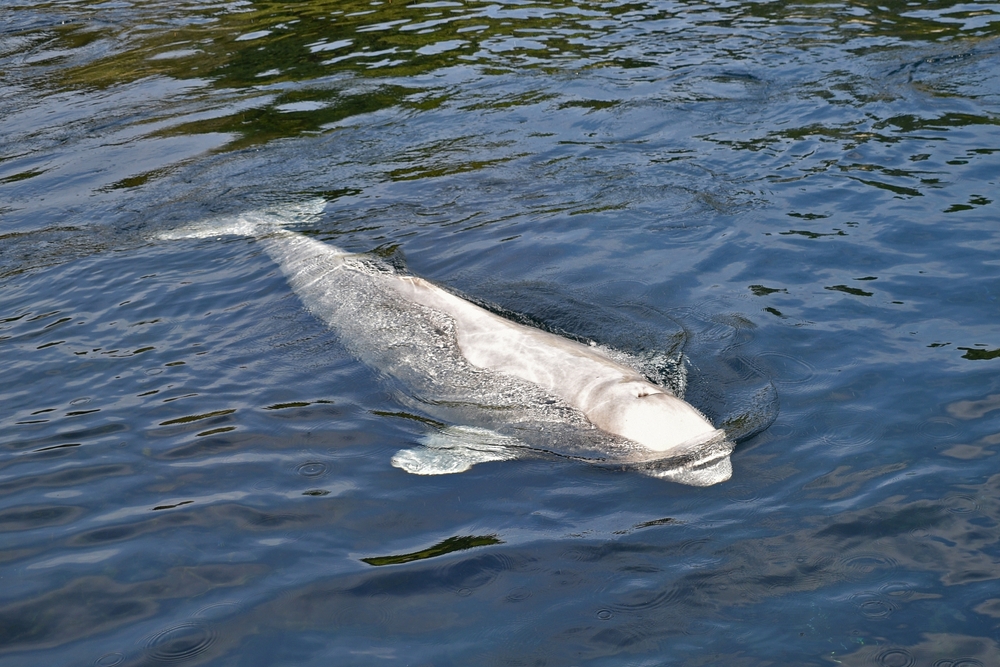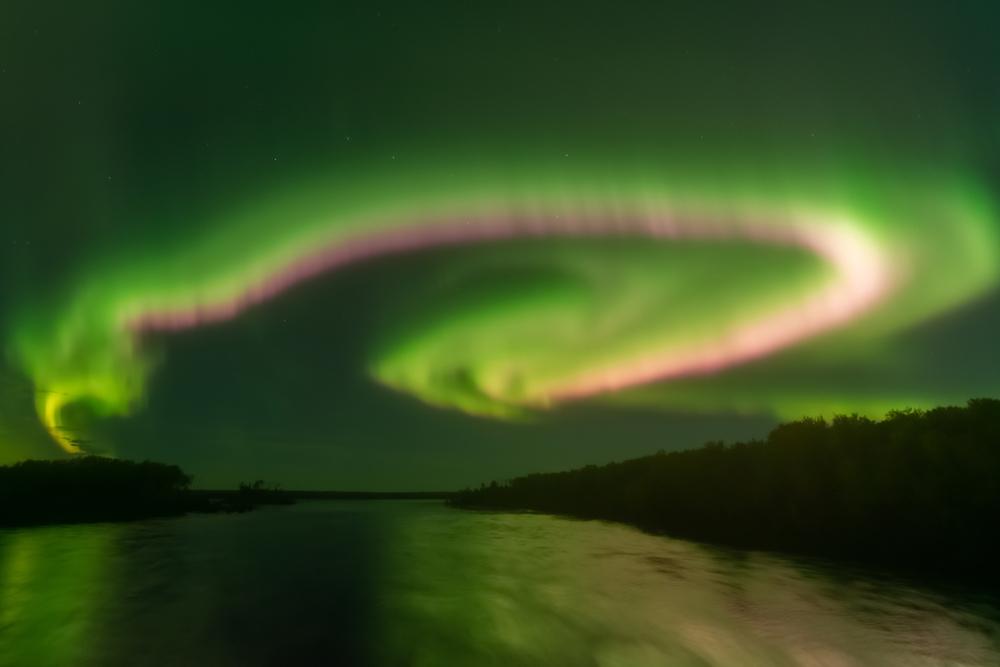On the rocky shores of Hudson Bay sits Churchill, Manitoba—a small, unassuming town filled with natural beauty, First Nations culture, and more than a few once-in-a-lifetime experiences. Referred to as the “Polar Bear Capital of the World,” Churchill offers up its unparalleled wildlife encounters to visitors. Churchill promises, and delivers, a wholly unique experience.
Churchill is located in the northern part of Manitoba, Canada, along the western coast of Hudson Bay. Despite its remote location and small population, it is considered a gateway to the Arctic and an intersection of diverse landscapes—from the boreal forests to the open tundra. Accessible by plane or a two-day train ride from Winnipeg, Churchill offers a true off-the-grid adventure. This isolation has preserved its unspoiled beauty.

No doubt, Churchill’s most famous inhabitants are the polar bears. Each fall, as the Hudson Bay freezes, the bears migrate towards the coast, providing one of the most accessible and reliable opportunities to observe polar bears in their natural habitat. Specialist tours on tundra buggies allow visitors to safely witness the animals up close.
Alongside the bears are the so-called ‘Canaries of the Sea’—beluga whales. In the summer months, thousands of these whales fill the Churchill River estuary, offering opportunities for kayaking and boat tours. Their playful nature and white bodies contrasted against the dark waters attract photographers and wildlife enthusiasts alike.

Churchill also boasts awe-inspiring the northern lights, the Aurora Borealis. With minimal light pollution and its location directly beneath the Auroral Oval, Churchill offers excellent displays of the celestial dance. Visible for over 300 nights annually, it is one of the best locations on the planet to behold this spectacle. In addition to wildlife tours and northern lights viewing, visitors can enjoy guided hikes across the tundra to glimpse hidden alcoves of this expansive wilderness, partake in bird-watching to observe the numerous migratory species that pass through, or take part in dog sledding excursions during the winter months.

Originally inhabited by the Indigenous Chipewyan, Cree, and Inuit peoples, Churchill is rich with Indigenous traditions. Cultural tours offer serious forays into the heritage of the land’s first peoples, exploring their centuries-old customs, crafts, and stories. The European presence began in earnest with the establishment of the fur trade in the late 17th century. The historic Prince of Wales Fort, constructed by the Hudson Bay Company, stands as a sentinel of the era.
Today, Churchill is a community of about 900 residents, a mix of Indigenous peoples and settlers. The community thrives largely on ecotourism, with local businesses offering guided excursions to explore the surrounding wilderness. Residents of Churchill have fostered a profound connection with the natural world. Many are engaged in conservation efforts, ensuring that wildlife and local ecosystems remain protected.


